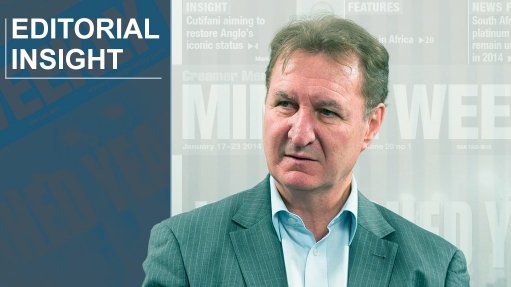
The court case between the Chamber of Mines and government has highlighted the points of contention around the Mining Charter. During cases like this, uncertainty is dragged out and meaningful investment stalled. But now a glimmer of hope has appeared as a result of the national executive committee of the African National Congress (ANC) seemingly reversing its stance on the Mining Charter being enforceable under the Mineral and Petroleum Resources Development Act (MPRDA) of 2002. This has been a major sticking point, as it confers legislative powers on the executive and thus violates the rule of law. Herbert Smith Freehills Africa partner and cochairperson Peter Leon feels the ANC’s reversal could help to resolve the differences between government and mining and begin to bring certainty back to the industry.
Another step along the road to the local development of platinum- using fuel cells has been taken with a tripartite agreement on local fuel cell components manufacture. There is optimism that this latest collaboration – between government-backed research organisation Hydrogen South Africa (HySA), Dutch fuel cell producer Nedstack BV and local enterprise Africa Green Energy Technologies – could provide the momentum that is needed for commercially viable local fuel cell manufacture, which will, in turn, drive demand for locally mined platinum. Planned is the local manufacture of components and systems for proton exchange membrane (PEM) fuel cells that produce zero-emission electricity – which is just what the climate-changing world is determined to introduce. HySA Systems will design and manufacture membrane electrode assemblies and PEM fuel cell producer and stack provider Nedstack will integrate them into the PEM fuel cells. This follows a potentially far-reaching step taken earlier this year towards the viable roll-out of hydrogen refuelling infrastructure for platinum-using fuel cell electric vehicles. That came about with the commercial launch of a system that allows hydrogen to be stored and transported in conventional fuel infrastructure. The hydrogen storage and logistics system, which uses innovative liquid organic hydrogen carrier technology, has been launched by Anglo American Platinum-backed developer Hydrogenious Technologies, of Germany, which has entered the US market in partnership with United Hydrogen Group.
One hopes that the African Union will have the wisdom to create mutual benefit with the launch of its African Minerals Development Centre. The spirit of the centre needs to be one that benefits Africa and its people as well as private-sector investors. It is clear that Africans across the continent are now at one in their determination to add value to African minerals on African soil. There is no doubt that local beneficiation does create local jobs. The big sticking point is the viability of that beneficiation, which often requires electricity and skills that are simply not there. Also, government incentives are often essential for beneficiation to have a business case, without which there will be no takers. African Union chairperson Dr Nkosazana Dlamini-Zuma told the Junior Indaba in Johannesburg last week that the aim was to double value-add from the current 15% to 30% and create seven-million African jobs in the process.